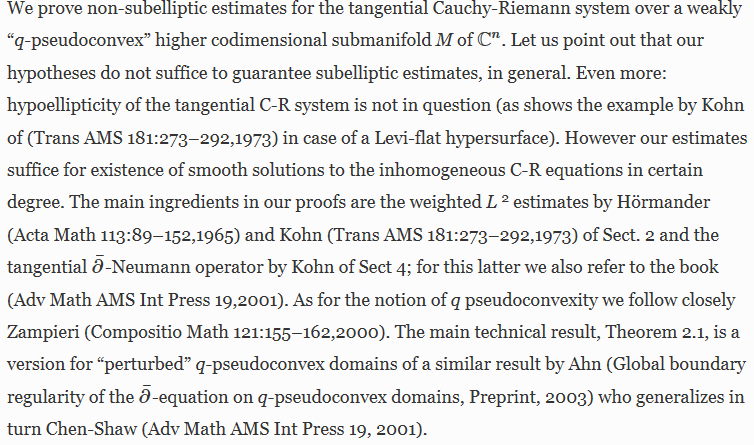Gravitationally Collapsing Shells in (2+1) Dimensions
Robert B. Mann,John J. Oh
|
Physical Review D
74
(2006)
We study gravitationally collapsing models of pressureless dust, fluids with pressure, and the generalized Chaplygin gas (GCG) shell in (2+1)-dimensional spacetimes. Various collapse scenarios are investigated under a variety of the background configurations such as anti-de Sitter (AdS) black hole, de Sitter (dS) space, flat and AdS space with a conical deficit. As with the case of a disk of dust, we find that the collapse of a dust shell coincides with the Oppenheimer-Snyder type collapse to a black hole provided the initial density is sufficiently large. We also find—for all types of shell—that collapse to a naked singularity is possible under a broad variety of initial conditions. For shells with pressure this singularity can occur for a finite radius of the shell. We also find that GCG shells exhibit diverse collapse scenarios, which can be easily demonstrated by an effective potential analysis.
- 초록
We study gravitationally collapsing models of pressureless dust, fluids with pressure, and the generalized Chaplygin gas (GCG) shell in (2+1)-dimensional spacetimes. Various collapse scenarios are investigated under a variety of the background configurations such as anti-de Sitter (AdS) black hole, de Sitter (dS) space, flat and AdS space with a conical deficit. As with the case of a disk of dust, we find that the collapse of a dust shell coincides with the Oppenheimer-Snyder type collapse to a black hole provided the initial density is sufficiently large. We also find—for all types of shell—that collapse to a naked singularity is possible under a broad variety of initial conditions. For shells with pressure this singularity can occur for a finite radius of the shell. We also find that GCG shells exhibit diverse collapse scenarios, which can be easily demonstrated by an effective potential analysis.
- 초록
We study gravitationally collapsing models of pressureless dust, fluids with pressure, and the generalized Chaplygin gas (GCG) shell in (2+1)-dimensional spacetimes. Various collapse scenarios are investigated under a variety of the background configurations such as anti-de Sitter (AdS) black hole, de Sitter (dS) space, flat and AdS space with a conical deficit. As with the case of a disk of dust, we find that the collapse of a dust shell coincides with the Oppenheimer-Snyder type collapse to a black hole provided the initial density is sufficiently large. We also find—for all types of shell—that collapse to a naked singularity is possible under a broad variety of initial conditions. For shells with pressure this singularity can occur for a finite radius of the shell. We also find that GCG shells exhibit diverse collapse scenarios, which can be easily demonstrated by an effective potential analysis.
More









